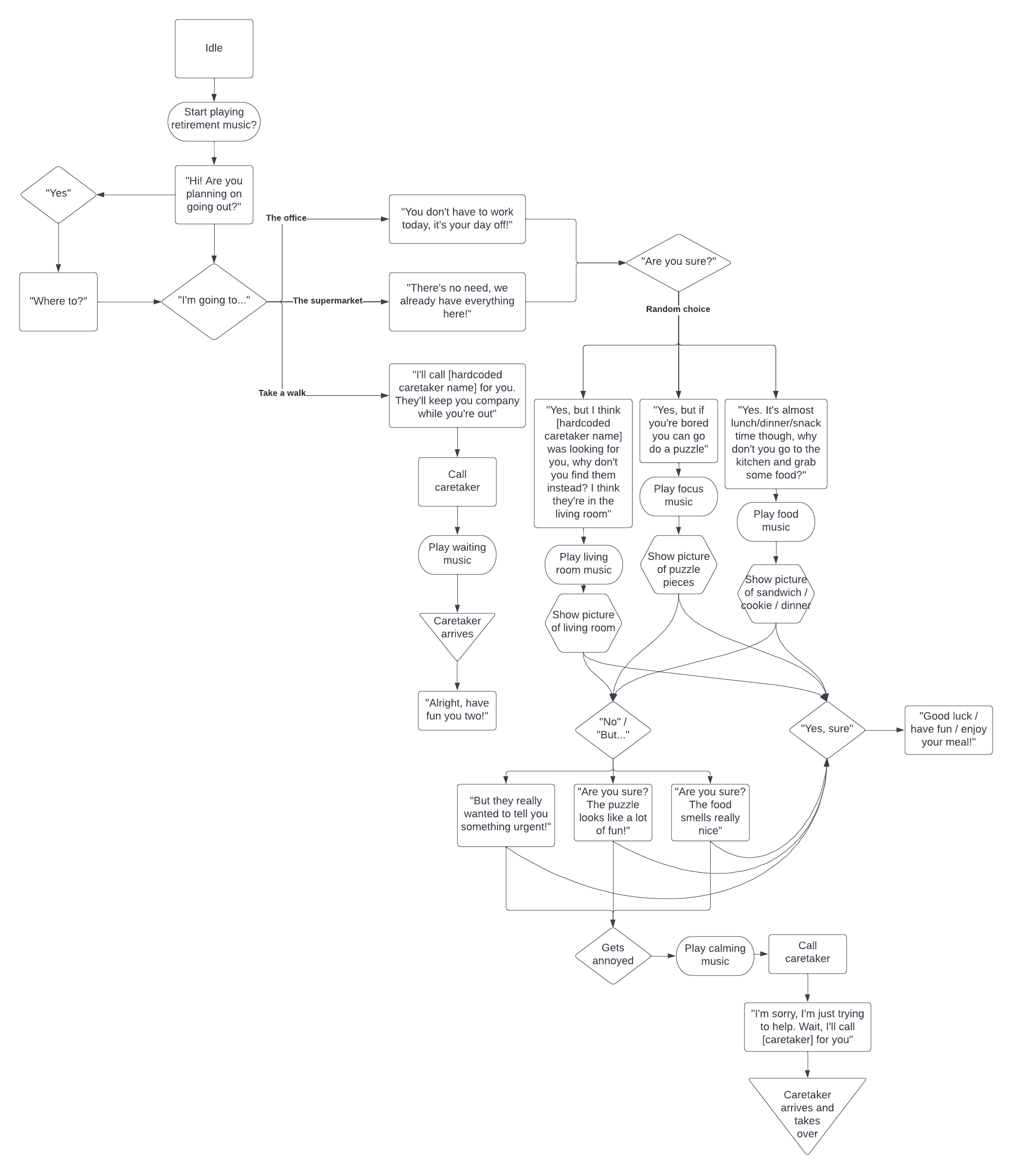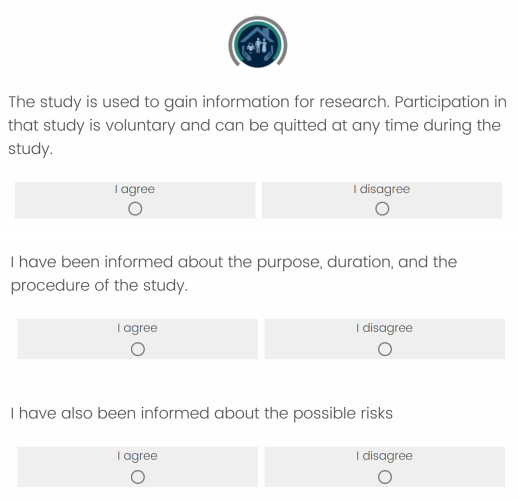Prototype
For our evaluation, we decided to implement a vertical prototype that shows one slice of the full functionality. Because not all functions could be implemented in detail, we need to hardcode some parts.
We also need a control condition to test if the provided dialogues and music are the reason why a person stays. Hence we have designed 2 different prototypes (referred to as Design X (Full Interaction) and Design Y (Control Condition) in Test). Both prototypes are described in detail below.
Full interaction flow - Design X:
The robot tries to stop the user from leaving the building with the use of dialogues and music. The dialogue should be able to distract PwD with an activity and call the caretaker if needed. Music will be used to underline a mood or trigger a reminder for a certain activity.
Still, as it is only a pilot prototype it has limited ways to react to users' speech, for example:
- the robot knows only 3 reasons to leave the care home: going for a walk, to the supermarket, or to the office
- the robot only suggests 3 different activities to distract people from leaving: going to living room, doing a puzzle, or having a coffee
(for more details see FlowChart below).
In the current prototype, the suggested activities and music are not personalized and have been used according to the team's liking. In the later iterations they should be changed according to the user's individual preferences.
Control Condition - Design Y:
This prototype does not play music nor supports complex dialogues. It tries to stop the user from leaving by saying 'I'm sorry, you cannot leave' and actively blocks the door so that the user cannot leave. The blocking is done by Pepper moving its arm in front of the door.
We are using this as a control condition to compare between a 'human-social' and a 'physical' way to prevent people from leaving.
Code
The choregraphe code for both the flows can be found in the Gitlab Repo.
Flow Chart for Full interaction Flow
For design X which is the full interaction flow, we created a flowchart. It shows which dialogues are provided and the variety of possible reactions.
Ethics
|

|